#44th Infantry Division
Explore tagged Tumblr posts
Text

Some of the 14,576 soldiers of the famed 44th Infantry Division wave and cheer as the liner Queen Elizabeth, which brought them home from Europe, ties up at a dock, July 20, 1945. It was the 44th Division that battled its way across France to the Austrian heart of the now-crumbled Nazi empire.
Photo: Anthony Camerano for the AP
#vintage New York#1940s#Anthony Camerano#World War II#RMS Queen Elizabeth#July 20#homecoming#20 July#44th Infantry Division#returning veterans#vintage NYC
66 notes
·
View notes
Text

Infantry men of "B" company, 44th armored infantry battalion, 6th division, cross the street pass the body of PFC Robert Vardy Wayne, who was just been shot by a sniper, age 19, 1945, in Germany.
#ww2#wwii#us troops#us army#world war ii#second world war#world war 2#world war two#1940s#1945#ww2 germany#ww2 history#war history#western front#1944#wwii history#history
42 notes
·
View notes
Text
USS Carolina (1812) sank 27 December 1814


Painting by Keith Wilkie "In the twilight, British soldiers saw the masts of a ship on the Mississippi River next to their position. Believing it to be a Royal Navy vessel, soldiers ran to the levee and began hailing the ship. They realized their mistake when the U.S. Navy’s twelve-gun schooner Carolina, commanded by Capt. Henley, opened fire with a broadside of grapeshot. Meanwhile, advancing under cover of darkness, and guided by the British campfires, the American divisions attacked the camp on both flanks. The attacking Right Division drove the camp’s pickets in ahead of them. Fighting spread inland and Coffee’s Left Division pressed the British right to encircle the defenders. The surprised redcoats initially retreated but quickly rallied and counterattacked along the road. They nearly captured the two American cannon before U.S. infantry drove them back once more. In the darkness, as the fighting became widespread, confused, and hand-to-hand, some U.S. units became separated or lost in the dark. At about 0400, Col. Brooke’s 2d Brigade began arriving to support the British defenders. Jackson ordered his men to disengage and retire. The 7th and 44th U.S. Infantry, along with some attached militia, covered the retreat against a possible counterattack, but Keane’s army was in no condition to pursue. Perplexed over the rapid and undetected American advance, and their camp in shambles, Keane ordered his men to take defensive positions. U.S. casualties amounted to 24 killed, 115 wounded, and 74 missing or captured. British losses included 46 killed, 166 wounded, and 64 missing."
"On Christmas Day, General Pakenham arrived and assumed command of the British land forces and for the next few days the armies cautiously watched each other. While the Royal Navy ferried more troops and artillery ashore and evacuated the wounded, the new commander reorganized his men into three brigades. Pakenham realized that the U.S. Navy’s vessels on the Mississippi River could enfilade his left flank in any move toward New Orleans. The Mississippi Flotilla, under the command of Master Commandant Patterson, who held the local rank of commodore, consisted of Carolina, riding at anchor; the unfinished converted sixteen-gun sloop-of-war Louisiana, anchored about one mile farther upriver and being used as a floating battery under Lt. Thompson’s command; and two gunboats. To remove this threat, Pakenham ordered his chief of artillery, Lt. Col. Dickson, to sink Carolina and, if possible, Louisiana. After cutting embrasures in the levee during the night of 25 December, the British erected furnaces for heating “hot shot,” and waited for more ammunition.
The British opened fire at dawn on 27 December, with guns firing round shot and howitzers firing shell, the artillerymen quickly found the range to Carolina. Both Louisiana and Carolina returned fire, but only the forward 12-pounder aboard the Carolina could reply effectively. Patterson ordered both ships and the gunboats to withdraw upstream. With shot and shell raking her deck, the Carolina struggled against the current and northwest wind. Finally, a hot shot penetrated to the hold and started a fire. When he realized the flames were out of control, Captain Henley ordered the crew to abandon ship before the fire spread to the magazine and ignited the powder. The resulting explosion destroyed the ship at about 1020. Although at maximum range, British artillerymen now turned their attention on Louisiana, but the crew used their boats to tow the ship upstream to safety. The men of Carolina later salvaged some guns from the sunken hulk and served on shore."
Source
8 notes
·
View notes
Text

Battle of Gettysburg - Day 2
July 2
5:10 PM
The 20th Maine Volunteer Infantry Regiment Defends the Union Left Flank
"Fix bayonets!" The order came along the line. It was an order no one wanted to hear, yet no one hesitated. With bayonets fixed, the troops of the 20th Maine Volunteer Infantry Regiment dressed their line and waited. Then the order came. "Charge!"
From atop Little Round Top, Brigadier General Gouverneur Warren, the Chief Topographical Engineer of the Army of the Potomac, could see the entire battle unfold before him. III Corps held positions at the Peach Orchard, the Wheatfield, and Devil's Den, and one by one they were attacked by advancing Confederate forces. However, as he watched the Rebels adanced, he noticed a portion of them were swinging left and heading towards his position. This was a problem. The position at Little Round Top was the left most position of the Union line and, to make things worse, there was only a small contingent from the Army Signal Corps holding it. If the Confederates arrived, there was nothing stopping them from capturing the hill and swinging north to turn the Army of the Potomac's vulnerable left flank.
Without hesitation, Warren quickly sent out couriers to look for reinfocements. One of his couriers would encounter Colonel Strong Vincent, the commander of the 3rd Brigade, of the 1st Division, of V Corps. V Corps had been ordered by General Meade to plug the gap created by III Corps wreckless advance and, due to the confused nature of the fighting, many of its divisions and brigades were being spread out and sent to different portions of the line.
Initially, the courier wanted to talk to Vincent's division commander and relay Warren's message to him. But eventually Vincent managed to convince him to give the orders to him instead and, upon realizing the importance of situation, quickly orderd his brigade to march to Little Round Top.
In deploying his brigade at the hill, the 20th Maine Volunteer Infantry Regiment, under the command of Colonel Joshua Lawrence Chamberlain, was positioned on the very left. In this position, the 20th Maine did not only become the left flank of the brigade, but they also became the left flank of the whole Army of the Potomac. Beyond them was nothing more but open air.
Vincent's brigade arrived at Little Round Top just in time. Moments after arriving, at around 4:45 in the afternoon, the Confederate 4th and 5th Texas Regiment, as well as the 4th Alabama Regiment, struck the center of Vincent's Brigade. Despite the tired and exhausting march under the day's heat, the Confederates still found the energy to rush up the hill and attack. The Union troops quickly responded with a heavy volley of musket fire. With good positions and a determined defense, the Union managed to repulse the Confederates. However, Colonel Vincent was mortally wounded and so Colonel James Rice, of the 44th New York, assumes command of the brigade.
At 5:10 in the afternoon, as another Confederate attack on the center and right of the brigade was repulsed, the Confederate 15th Alabama Regiment struck the left flank. Moving against the front of the 20th Maine, the 15th Alabama were stuck by heavy fire, but countered with volleys of their own.
At 5:25 in the afternoon, fighting between both sides momentarily stops, as the Confederates prepare for another attack. This respite does not last long, as the 15th Alabama make another assault at 5:28 in the afternoon. Once more, they move further right, thus forcing the 20th Maine to extend more and more to the left.
Hoping to outflank the exposed left of the 20th Maine, the 15th Alabama shifted their attacks further right (the Union's left). Seeing this, the 20th Maine starts to extend their line, thinning their front in order to occupy a broader front. This thus prevents the enemy from outflanking them.
As the 20th Maine desperately tries to hold the left, the rest of the brigade fends of attacks from the other Confederate regiments, who strike with great energy. Despite this, the Union line at Little Round Top was holding.
At around 5:45 in the afternoon, knowing that he can no longer extend his line, in fear of it becoming too thin, Chamberlain orders the 20th Maine to refuse the line. In this maneuver, the regiment's left wing would pull back and face towards the left, essentially creating an L shape. This would thus enable them to properly cover their left flank.
By 6:00 in the evening, the 15th Alabama, realizing that other Confederate regiments were withdrawing, and realizing they couldn't break the enemy before them, begins to withdraw. At 6:05 in the evening, Chamberlain, unaware that the 15th Alabama was about to withdraw, and noting that his regiment was desperately running low on ammunition, orders a charge against the enemy. He hoped that a charge would bring the final blow upon the foe who he believed were exhausted from a constant uphill fight.
Putting on their bayonets, the 20th Maine's left flank swung and wheeled right, in order to realign with the rest of the regiment, before the unit as a whole charged downhill. This sudden assaullt caught the 15th Alabama by surprise, which resulted in their troops either routing or surrendering.
With that the Union left had been secured.
However, as the fight for Little Round Top was raging, other battles were occuring down below.
----------------------------------------
Featuring my ponysona, my GF's Ponysona, and Cream Cake, as members of the 20th Maine Volunterr Infantry Regiment. In front of them is a makeshift stone wall, which was stacked by members of the 20th Maine in order to better cover themselves against musket fire during the fighting at Little Round Top.
#Cream Cake#Silver Wing#Unnamed GF Pony#MLP#My Little Pony#Earth Pony#Pegasus#History#Gettysburg#Battle of Gettysburg#Gettysburg 160#Gettysburg 160th Anniversary#I couldn't resist depicting myself as a member of the 20th Maine#The 20th Maine is my all time favorite American Civil War Regiment#Their fight at Little Round Top is also one of my favorite engements that occured during the fighting at Gettysburg
19 notes
·
View notes
Text


Found on Reddit.
This letter was issued to soldiers of the 44th Armored Infantry Battalion, 6th Armored Division. It outlined various humorous tips on integrating back into civilian life upon their return to the U.S. See below for a full transcription.
The letter reads:
“ 2 December 1944
SUBJECT: Indoctrination for Return to United States.
1. In compliance with current policies for future rotation of armed forces overseas, it is directed that, in order to maintain the high standard of character of the American soldier and to prevent any dishonor to reflect upon the uniform, all individuals eligible for return to the U.S. under current directives will undergo an indoctrination course of demilitarization prior to approval of his application for return.
2. The following points will be emphasized in the subject indoctrination course:
a. In America there are a remarkable number of beautiful girls. These young ladies have not been liberated and many are gainfully employed as stenographers, sales girls and beauty operators or welders. Contrary to current practices, they should not be approached with “How much?”. A proper greeting is “Isn’t it a lovely day?” or “Have you ever been in Chicago?” then say “How much?”.
b. A guest in a private home is usually awakened in the morning by a light tapping on his door and an invitation to join the host at breakfast. It is proper to say “I’ll be there shortly.” DO NOT SAY “Blow it out your ___!
c. A typical American breakfast consists of strange foods, such as cantaloupes, fresh eggs, milk, ham, etc. These are highly palatable and though strange in appearance are extremely tasty. Butter made from cream, is often served. If you wish some butter, you turn to the person nearest it and say quietly, “Please pass the butter.” You do not say “Throw me the god damn grease!”
d. Very natural urges are apt to occur when in a crowd. If it’s found necessary to defecate, one does not grab a shovel in one hand and paper in the other and run for the garden. At least 90% of American homes have one room called the “Bathroom”, i.e., a room that in most cases, contains a bathtub, wash basin, medicine cabinet and a toilet. It is the latter you will use in this case. Instructors should make sure that all personnel understand the operation of a toilet- particularly the lever or button arrangement that serves to prepare the device for re-use.
e. In the event the helmet is retained by the individual, he will refrain from using it as a chair, wash bowl, foot bath or bathtub. All the devices are furnished in the average American home. It is not considered good practice to squat Indian fashion in the corner in the event all chairs are occupied. The host will usually provide suitable seats.
f. Belching in company is strictly frowned upon. If one should forget about it, however, and belch in the presence of others, a proper remark is “Excuse me.” DO NOT say “It must have been that lousy chow we’ve been eating!”
g. American dinners, in most cases, consist of several items, each served in a separate dish. The common practice of mixing various items such as corn beef and pudding, or lima beans and peaches, to make it more palatable will be refrained from. In time the “separate dish” system will become enjoyable.
h. Americans have a strange taste for stimulants. The drinks in common usage on the Continent, such as underripe wine, alcohol and grapefruit juice or gasoline bitters and water (commonly known by the French term “Cognac”) are not ordinarily acceptable in civilian circles. These drinks should be served only to those who are definitely not within the inner circle of friends. A suitable use for such drinks is for serving to one’s landlord in order to break an undesirable lease.
i. The returning soldier is too often finding his opinions differ from those of his civilian associates. One should call upon his reserve of etiquette and correct his acquaintances with such remarks as “I believe you have made a mistake!” or “I’m afraid you are in error on that” DO NOT say “Brother, you’re really FOOED UP!”, this is considered impolite.
j. Upon leaving a friend’s home after a visit, one may find his hat misplaced. Frequently it has been placed in a closet. He should turn to one’s host and say “I don’t seem to have my hat, could you help me find it?” DO NOT say, “Don’t anybody leave this room. Some S.O.B. has stolen my hat”.
k. In travelling in the U.S., particularly in a strange city, it is often necessary to spend the night. Hotels are provided for this purpose and almost anyone can give directions to the nearest hotel. Here, for a small sum, one can register and be shown to a room where he can sleep for the night. The present practice of entering the nearest house, throwing the occupants into the yard and taking over the premises will cease.
l. Whiskey, a common American drink, may be offered to a soldier on social occasions. It is considered a reflection on the uniform to snatch the bottle from the hostess and drain it, cork and all. All individuals are cautioned to exercise the extreme control in these circumstances.
m. In motion picture theaters, seats are provided. Helmets are not required. It is NOT considered good form to whistle every time a female over 8 and under 88 crosses the screen. If vision is impaired by the person in the seat in front, there are plenty of other seats which one can occupy. DO NOT hit him across the back of the head and say, “Move your head, jerk, I can’t see a damn thing.”
n. It is not proper to go around hitting everyone of draft age in civilian clothes. He might have been released from the service for medical reasons. Ask for his credentials, and if he can’t show any, THEN slug him.
o. Upon retiring, one will often find a pair of pajamas laid out on the bed. (Pajamas, it should be explained, are two-piece garments which are donned after all clothing has been removed.) The soldier, confronted by these garments should assume an air of familiarity and act as though he were used to them. A casual remark such as “My, what a delicate shade of blue” will usually suffice. Under no circumstances say “How in the hell do you expect me to sleep in a get-up like that.”
p. Natural functions will continue. It may be necessary frequently to urinate. DO NOT walk behind the nearest tree or automobile you find to accomplish this. Toilets (see d above) are provided in all public buildings for this purpose.
q. Beer is sometimes served in bottles. A cap remover is usually available and it is not good form to open the bottle by the use of the tooth.
r. Always tip your hat before striking a lady.
s. Air raids and Enemy Patrols are not encountered in America. Therefore, it is not necessary to wear the helmet in church or at social gatherings or to hold the weapon “at ready”, loaded and cocked, when talking to civilians in the street.
t. Every American home and all hotels are equipped with bathing facilities. When it is desired to take a bath, it is not considered good form to find the nearest stream and strip down and bathe. This is particularly true in heavily populated areas.
u. All individuals returning to the United States will make every effort to conform to the customs and habits of the regions visited and to make themselves as inconspicuous as possible. Any actions which reflect upon the honor of the uniform will be promptly dealt with.
BY ORDER OF LT. COL. KILGORE “
0 notes
Text
Books of 2023
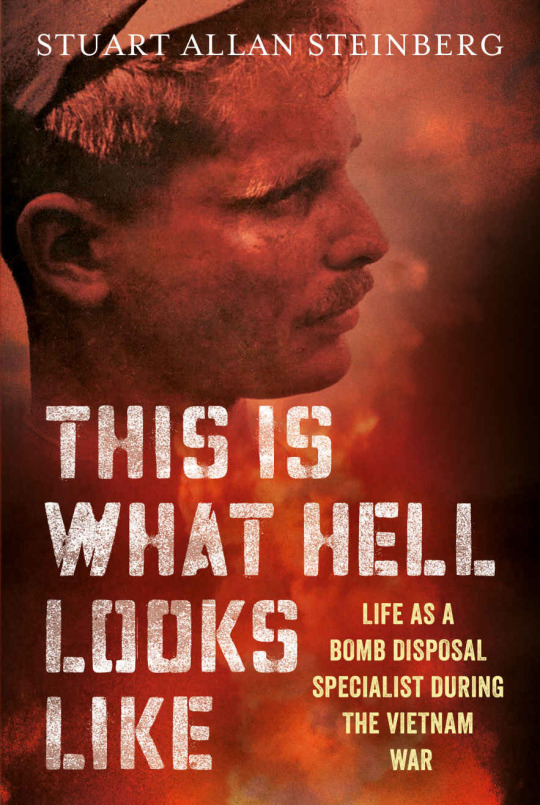
Book 27 of 2023
Title: This Is What Hell Looks Like: Life as a Bomb Disposal Specialist During the Vietnam War Authors: Stuart Allan Steinberg ISBN: 9781625450654 Tags: AC-47 Spooky, AFG Afghanistan, B-52 Stratofortress, CBRNE Weapons, EOD, FRA ADT French Ground Army (Armée de terre), FRA France, FRA Groupement Mobile 100 (Indochina War), HH-43 Huskie, JPN Japan, JPN Okinawa, JPN Okinawa - Naha, KOR Korea, KOR ROK 26th Infantry Regiment, KOR ROK 26th Infantry Regiment - 2/56, KOR ROK Capital Tiger Division, KOR ROK Republic of Korea Army, KOR ROKMC Republic Of Korea Marine Corps, M551 Sheridan, Office of Strategic Services (OSS), OSS Albert Peter Dewey, OV-1 Mohawk, Pathfinders, SpecOps, Typhoon Hester, UN United Nations, UN UNODC Office on Drugs and Crime, US CIA Central Intelligence Agency, US USA 101st Airborne Division - Screaming Eagles, US USA 119th Assault Helicopter Company, US USA 140th Transportation Det., US USA 158th Aviation Bn, US USA 15th Artillery Regiment, US USA 15th Artillery Regiment - 7/15, US USA 160th Aviation Group, US USA 160th Aviation Group - Pathfinders, US USA 170th Ordnance Det, US USA 173rd Airborne Brigade - 3rd Provisional Rifle Co, US USA 173rd Airborne Brigade - Casper Aviation Platoon, US USA 173rd Airborne Brigade - Sky Soldiers, US USA 17th Artillery Regiment, US USA 17th Artillery Regiment - 2/17, US USA 17th Cavalry Regiment, US USA 17th Cavalry Regiment - 2/17 - A Troop, US USA 17th Cavalry Regiment - 2/17 - Aero-Rifle, US USA 184th Ordnance Bn, US USA 187th Infantry Regiment, US USA 187th Infantry Regiment - 3/187, US USA 191st Ordnance Bn, US USA 1st Cavalry Division, US USA 25th Ordnance Det., US USA 26th Artillery Regiment, US USA 26th Artillery Regiment - 8/26, US USA 27th Engineers, US USA 287th Ordnance Det., US USA 319th Artillery Regiment, US USA 319th Artillery Regiment - 2/319, US USA 326th Engineer Bn, US USA 326th Engineer Bn - B Co, US USA 327th Infantry Regiment, US USA 327th Infantry Regiment - 1/327, US USA 327th Infantry Regiment - 2/327, US USA 377th Artillery Bn, US USA 39th Artillery Regiment, US USA 39th Artillery Regiment - 1/39, US USA 39th Transportation Bn, US USA 42nd Ordnance Det, US USA 44th Ordnance Det, US USA 46th Supply and Service Bn, US USA 4th ID, US USA 4th ID - 1st Brigade, US USA 502nd Infantry Regiment, US USA 502nd Infantry Regiment - 2/502, US USA 502nd Infantry Regiment - 2/502 - B Co, US USA 503rd Infantry Regiment, US USA 503rd Infantry Regiment - 1/503, US USA 503rd Infantry Regiment - 2/503, US USA 503rd Infantry Regiment - 4/503, US USA 506th Infantry Regiment, US USA 506th Infantry Regiment - 2/506, US USA 506th Infantry Regiment - 2/506 - D Co, US USA 50th Infantry Regiment, US USA 50th Infantry Regiment - 1/50, US USA 51st Medical Co, US USA 533rd Ordnance Det, US USA 571st Ordnance Co, US USA 58th Infantry Regiment, US USA 58th Infantry Regiment - D Co, US USA 59th Ordnance Brigade, US USA 5th ID (Mechanized), US USA 5th ID (Mechanized) - 1st Brigade, US USA 647th Quartermaster Co, US USA 67th Ordnance Det, US USA 69th Armor Regiment, US USA 69th Armor Regiment - 1/69, US USA 75th Rangers, US USA 75th Rangers - L Co, US USA 77th Aerial Rocket Artillery (ARA), US USA 77th Aerial Rocket Artillery (ARA) - 4/77, US USA 820th Ordnance Co, US USA 85th Ordnance Det., US USA 8th Infantry Regiment, US USA 8th Infantry Regiment - 3/8, US USA 8th Infantry Regiment - 3/8 - B Co, US USA 8th Transportation Group, US USA 90th Replacement Bn, US USA ASA 8th Radio Research Station, US USA ASA Army Security Agency, US USA Combat Trackers - K9, US USA Dugway Proving Grounds UT, US USA Fort Gordon GA, US USA Fort McClellan AL, US USA General John J. Hennessey, US USA General John M. Wright Jr., US USA LRRP Team (Vietnam War), US USA United States Army, US USA USSF 5th SFG, US USA USSF Green Berets, US USA USSF Special Forces, US USA USSF Team A-101, US USA USSF Team A-221, US USA XXIV Corps, US USAF Eglin Air Force Base FL, US USAF United States Air Force, US USMC 1st MarDiv, US USMC 3rd Force Recon Co, US USMC 3rd MarDiv, US USMC MAG-36, US USMC United States Marine Corps, US USN NOS Indianhead MD, US USN NOS Naval Ordnance Station, US USN United States Navy, US UT USA DPG - Sheep Kill Incident (1968), US UT Utah, VNM 1968 Tet Offensive (1968) (Vietnam War), VNM 1969 Mini-Tet Offensive (1969) (Vietnam War), VNM 506 Valley, VNM A Shau Valley, VNM An Khe, VNM An Khe Pass, VNM An Loa Mountain, VNM Ao Lai Bang, VNM Ap Hien, VNM Ap Hien Luong, VNM Ap Thanh Tan, VNM Ap Uu Phuong, VNM Arizona Territory, VNM Battle of Dong Ap Bia (Hamburger Hill) (Operation Apache Snow) (1969) (Vietnam War), VNM Battle of Hamburger Hill (Dong Ap Bia) (Operation Apache Snow) (1969) (Vietnam War), VNM Battle of Khe Sanh (1968) (Tet Offensive) (Vietnam War), VNM Battle of Lang Vei (1968) (Tet Offensive) (Vietnam War), VNM Battle of Saigon (1968) (Tet Offensive) (Vietnam War), VNM Bien Hoa Airbase (Vietnam War), VNM Binh Dinh Province, VNM Bong Son, VNM Cam Lo River, VNM Cam Ranh Bay, VNM Camp Eagle (Vietnam War), VNM Camp Evans (Vietnam War), VNM Camp Radcliff (Vietnam War), VNM Camp Vasquez (Vietnam War), VNM Central Highlands, VNM CIA Phung Hoang / Phoenix Program (1965-1972) (Vietnam War), VNM Cu Chi, VNM Cung Son, VNM Cung Son Special Forces Camp (Vietnam War), VNM Da Nang, VNM Dien Bien Phu, VNM DMZ Demilitarized Zone - 17th Parallel (Vietnam War), VNM Dong Ha, VNM DRV NVA North Vietnamese Army, VNM DRV VC 300th Sapper Bn, VNM DRV VC 300th Sapper Bn - 5th Co, VNM DRV VC Viet Cong, VNM DRV VM Viet Minh, VNM Duc Co, VNM French Indochina War (1946-1954), VNM FSB Airborne (Vietnam War), VNM FSB Bastogne (Vietnam War), VNM FSB Berchtesgaden, VNM FSB Birmingham (Vietnam War), VNM FSB Blackhawk (Vietnam War), VNM FSB Currahee (Vietnam War), VNM FSB Davis (Vietnam War), VNM FSB Destiny (Vietnam War), VNM FSB Jack (Vietnam War), VNM FSB Ripcord (Vietnam War), VNM FSB Roy (Vietnam War), VNM FSB Shepard (Vietnam War), VNM FSB Sheridan (Vietnam War), VNM FSB T-Bone, VNM FSB Tomahawk (Vietnam War), VNM FSB Vehgel (Vietnam War), VNM Gia Lo, VNM Ha Tay, VNM Hai Van Pass, VNM Hanoi, VNM Highway 1, VNM Highway 19, VNM Ho Chi Minh Trail (Vietnam War), VNM Hue, VNM I Corps (Vietnam War), VNM Ia Drang Valley, VNM II Corps (Vietnam War), VNM IV Corps (Vietnam War), VNM Kontum, VNM Lang Vei Special Forces Camp (Vietnam War), VNM Long Binh Post (Vietnam War), VNM LZ English (Vietnam War), VNM LZ Hard Times (Vietnam War), VNM LZ Pony (Vietnam War), VNM LZ Sally (Vietnam War), VNM LZ Schueller (Vietnam War), VNM LZ Uplift (Vietnam War), VNM Mang Yang Pass, VNM Nha Trang, VNM Operation Apache Snow (1969) (Vietnam War), VNM Operation Arc Light (1965-1973) (Vietnam War), VNM Operation Ranch Hand (1962-1971) (Vietnam War), VNM Operation Randolph Glen (1969-1970) (Vietnam War), VNM Phi Lu, VNM Phu Bai, VNM Phu Hiep, VNM Phu Hiep Base Camp (Vietnam War), VNM Phu Loc, VNM Phu Lu, VNM Phu Lu Bridge, VNM Phu Tai, VNM Phu Tai Valley, VNM Phu Thanh Valley, VNM Pleiku, VNM Pleiku Province (Gia Lai), VNM Quang Tri, VNM Quang Tri Province, VNM Que Son Valley, VNM Qui Nhon, VNM Qui Nhon Ammunition Base Depot (Vietnam War), VNM Route 441, VNM Route 506, VNM Route 545, VNM Route 547, VNM RVN ARVN Army of the Republic of Vietnam, VNM RVN ARVN CIDG Civilian Irregular Defense Group, VNM RVN ARVN MP Quan Canh Military Police, VNM Saigon, VNM Saigon - Buddhist Chua Quan Am Pagoda, VNM Saigon - US Embassy (Vietnam War), VNM Son Con Valley, VNM Song Bo, VNM Song Con, VNM Song Dai Giang, VNM Song Lai Giang, VNM Song Nong, VNM Tan Son Nhut Air Base, VNM Thon Khe Xa, VNM Thura Thien-Hue Province, VNM Tuy Hoa, VNM US Agent Orange (Vietnam War), VNM US MACV Advisory Teams (Vietnam War), VNM US MACV Battalion Advisory Team 46 (Vietnam War), VNM US MACV Military Assistance Command Vietnam (Vietnam War), VNM US USA 187th Infantry Regiment - 3/187 - Bn Advisory Team 46 (Vietnam War), VNM US USA 67th Evacuation Hospital - Qui Nhon (Vietnam War), VNM US USA 85th Evacuation Hospital - Phu Bai (Vietnam War), VNM US USAF Phu Cat Air Base (Vietnam War), VNM US USMC CAP Combined Action Platoon (Vietnam War), VNM US USMC CAP Team 3-1-3 (Vietnam War), VNM US USMC CAP Team 3-3-5 (Vietnam War), VNM US USMC DHCB Dong Ha Combat Base (Vietnam War), VNM US USMC III MAF Marine Amphibious Force (Vietnam War), VNM US USMC KSCB Khe Sanh Combat Base (Vietnam War), VNM US USMC/USA Phu Bai Combat Base (Vietnam War), VNM US USN NSA Naval Support Activity - Da Nang (White Elephant) (Vietnam War), VNM Vietnam, VNM Vietnam War (1955-1975), VNM Vinh Thang Valley, VNM Vung Chua Mountain, VNM Vung Ro Bay, VNM War Zone C (Vietnam War) Rating: ★★★★ (4 Stars) Subject: Books.Military.20th-21st Century.Asia.Vietnam War.US Army.EOD Description: From 1967-1971, Stuart Steinberg served in the U.S. Army as an explosive ordnance disposal specialist. In January 1968, he was sent to Dugway Proving Grounds in Utah, where chemical and biological weaponry was stockpiled, staying there until July 1968. Steinberg was involved in helping to clean up the worst nerve gas disaster in American history on March 13, 1968. As a result, he volunteered to serve in Vietnam from September 4, 1968 to March 24, 1970. This is What Hell Looks Like explores the difficult and traumatic situations faced by Steinberg and his teammates across their time in Vietnam. This volume also examines the causes and consequences of post-traumatic stress disorder though Steinberg's honest account of his experiences, including his subsequent addiction to prescription painkillers. Documenting Steinberg's personal journey through "Hell," his account casts further light on life during the Vietnam War. Review: Honestly, EOD stories are some of my favorites and this one did not disappoint, especially as I’ve read other tales of Ammo Dumps going up from other perspectives. The only negative is just how disjointed the book was. He could not keep a steady narrative or stream of thought going without bouncing back and forth from present day to the past and back again. It became so repetitive that it would take you out of the moment and out of the story all together.
#Books#Ebooks#Booklr#Bookblr#Vietnam War#non fiction#history#military#US army#EOD#Dugway Proving Grounds#Chemical and Biological Weapons#SheepKill Incident in 1968#Utah
0 notes
Photo



"The Siege of Bastogne was an engagement in December 1944 between American and German forces at the Belgian town of Bastogne, as part of the larger Battle of the Bulge.
[...]the Allied commanders considered the Ardennes area to be unsuitable for a large-scale German attack, mainly because of terrain issues. In addition, intelligence reports suggested that the only German divisions stationed in the area were weary, and in the weeks leading up to the assault, no Allied commander saw reason to believe that an attack was imminent. Bastogne, a hub city that commanded several important roads in the area, was defended mainly by the 28th Infantry Division, which had seen continuous fighting from 22 July-19 November, before being assigned to this relatively quiet area. The Allies believed only an infantry division was present opposite the 28th Infantry, and they believed any attack along this sector would be limited in scale. In the town of Bastogne, Belgium, there are seven roads in and seven roads out of the town. These roads were important for the movement of German armor, making Allied retention of the roads imperative.
On 19 December, the 28th Division command post transferred to Bastogne from Wiltz, a large village to the southeast. At Wiltz, the division put up its last stand; 3rd Battalion of the 110th—supported by armor and artillery—arrived at the city around noon of that day. The 44th Engineer Battalion was set up north of the town, but they were soon overwhelmed and retreated into the city, blowing up a bridge behind them. This small force—numbering no more than 500 in total—held out until the evening, when their position became completely untenable and they retreated to the west. With the 110th Infantry completely destroyed as an effective combat unit, it would be up to the rest of the Allied army to defend Bastogne.”
“The 28th Division has performed one of the greatest feats in the history of the American Army ... Against nine divisions it has held so firmly that the German timetable has been thrown of completely."
#danielsousaedit#daniel sousa#daisy johnson#enver gjokaj#dousy#agents of shield#agent carter#world war 2#ww2 history
102 notes
·
View notes
Text

Frozen Red Army soldier from the 44th Infantry Division in the Winter War.
26 notes
·
View notes
Photo

Destroyed Russian T-26 tank column of the Soviet 44th Infantry Division, Finland, 1940.
Luckily, Finland had stopped the arrival of “Russian world” and preserved its independence...
#Finland#Winter War#T-26#destroyed russian tank#tank#military history#russian defeat#defense of europe#Northern Europe#free world#winter#European history#russian invasion#Raat road
38 notes
·
View notes
Text
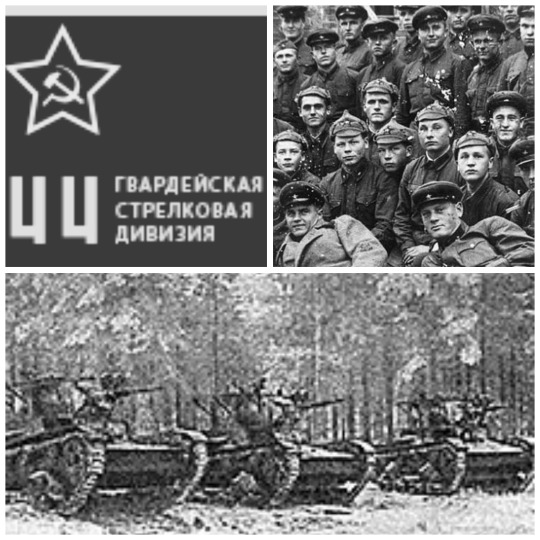
• 44th Rifle Division (Soviet Union)
The 44th Kievskaya of the Red Banner Rifle Division or 44th Kievskaya for short, was an elite military formation of the Soviet Union during the Winter War and Second world war. The unit is also famous for being the one of the first military formations out of which was formed the short-lived Soviet Ukrainian Army (1918–1919).
It was formed by the order no.6 of the Communist Party (Bolshevik) of Ukraine on September 22nd, 1918, as the 1st Insurgent Division along with the 2nd Insurgent Division. The 1st Insurgent Division was formed out of insurgent squads of Tarashcha and Novgorod-Sieversky uyezds. The chief of division (nachdiv) was appointed N.Krapivyansky and the chief of staff S.Petrikovsky (Petrenko). By the end of September the Division grew to 6700 bayonets, 450 sabers, 14 [artillery] guns, and from 10 to 18 machine guns "Maxim", 5 to 6 Colt, 20 to 30 Lewis. Because of that, selected regiments were reorganized into brigades. However, the name for the units were nominal as the brigade's headquarters were never formed, and functions of kombrigs were performed by the regimental commanders (colonel). Around that time at the divisional headquarters a security company was formed out of some 700 soldiers. That new unit was planned to be transformed into the 5th Regiment and used as a reserve. Also the 4th Insurgent Regiment was recommissioned as the 6th Insurgent Regiment (commander T.Chernyak) and along with the 1st Regiment of Red Cossacks was soon transferred to the 2nd Insurgent Division. In their places, were created the 3rd Insurgent Regiment, later called Novgorod-Sieversky (T.Chernyak) and the 4th Insurgent Nezhyn Regiment (P.Nesmeyan) transformed out the security company.
During the preparations for an assault on Kharkiv during the brief Soviet-Ukrainian war, most of the division, however, refused to obey orders except for the Red Cossacks and the 4th Insurgent Nezhyn Regiment. For that the divisional commander N.Krapivyansky was dismissed and court martialed. I Lokatosh was appointed the new chief of division and I. Panafidin the political commissar. The name of the division also changed to the Special Insurgent Division (order of Military Council of Kursk direction group of forces of November 21, 1918) as well as its formation consisting now only out of two brigades. The 44th Rifle Division participated in the Soviet invasion of Poland in autumn 1939. Later, during the Finno-Russian Winter War, the division was sent to the Finnish front as reinforcement for the Soviet 163rd Rifle Division which had attempted to advance into central Finland and become surrounded after capturing the town of Suomussalmi and was suffering heavy casualties. The 163rd Division, which was running short of food, was almost completely annihilated in combat with the Finnish 9th Infantry Division before the 44th Rifle Division could reach its position. With no ski troops, the 44th Rifle Division was completely road bound in the deep snow. The Finns, mounted on skis, and carrying superior arms (submachineguns), were able to break the route of march of the 44th Division on the road leading to Suomussalmi. By breaking the division into pieces along the road, after Finnish radio intelligence had confirmed that the whole division had entered the Raate road, the Finns were able to annihilate the entire unit. According to Robert Edwards, the division's Commander A. Vinogradev managed to escape, but later, on the orders of Stalin's emissary, Lev Mekhlis, he was shot for incompetence following a sham trial. Of the 44th Division's 17,000 troops, 1000 were captured and 700 escaped. The rest died.
The division was recreated after its destruction and part of 13th Rifle Corps, 12th Army, Kiev Special Military District in June 1941. 'Captured Soviet Generals' says that the division commander, Major General S.A. Tkachenko, was captured by the Germans. The division was immediately caught up in conflict and suffered heavy losses. By July 21st, 1941 the division was already short of shtat (establishment or Table of Organization and Equipment) by over 4,000 soldiers, 199 cargo trucks, and over 3,000 rifles and carbines. Divisional morale fell despite some small victories. Ultimately the division was wiped out in combat near the village of Podvyskoe in the Kirovograd and Uman region. The division was recreated at Leningrad in October 1941. It fought in northern Russia and Kurland with the 54th Army of Volkhov Front in January 1944 and the 67th Army of the Leningrad Front in May 1945. During the later stages of the war the division took part in assisting tank brigades as part of Operation: Bagration.
It was briefly reactivated after the war from 1955 at Uralsk in Uralsk Oblast, from the 270th Rifle Division. It was redesignated the 44th Motor Rifle Division on 4 June 1957. In January 1958 it became part of the Turkestan Military District with the dissolution of the South Ural Military District. The division disbanded on 1 March 1959. The 44th Rifle Division has lived on in games like Steel Division 2 as a playable battle group.
#ww2#second world war#wwii#military history#world war ii#world war 2#history#short post#soviet union#soviet history#divisions#steel division 2#military units
33 notes
·
View notes
Text

Private Beale of the 6th Battalion King's Own Scottish Borderers, 44th (Lowland) Infantry Brigade, 15th (Scottish) Infantry Division., carrying a Bren Gun over his shoulder near the River Maas in Holland. 1 November 1944
The 6th (KOSB) landed with the Division on the Normandy beaches on the 15th June 1944, and soon found themselves involved in the fierce battles around Caen and the River Odon. Fighting through France, Belgium and Holland, and crossing the Siegfried Line, they advanced across the Rhine into Germany, ending the war just beyond Hamburg.
(Photo source - © IWM B 11563)
#history#british army#Scotland#Scottish#military history#WW2#world war 2#world war two#second world war
39 notes
·
View notes
Video
Douglas C-47A-75-DL Skytrain ‘PH-PBA’ by Alan Wilson Via Flickr: c/n 19434 Built 1944 with the US military serial 42-100971. Wearing a classic KLM colour scheme, she is operated by DDA Classic Airlines (The Dutch Dakota Association) from Schipol Airport, Amsterdam. Seen on the grass flightline during the Imperial War Museum’s 2012 Autumn Airshow. Duxford Airfield, Cambridgeshire, UK 8th September 2012 The following wartime history of PH-PBA (42-100971) is from Joe Baugher’s incredible and indespensible website "http://www.joebaugher.com" :- “To USAAF Jan 11, 1944. Eighth Air Force 20Feb44. 44th Troop Carrier Squadron [6E*B; Nose #42], 316th Troop Carrier Group, Ninth Air Force, Cottesmore (Station 489). Transported paratroopers of the 2nd Battalion, 505th Parachute Infantry Regiment to a drop zone near Sainte-Mère-Église, Normandy, France on Mission ‘Boston’ 6Jun44. Transported paratroopers of the 505th Parachute Infantry Regiment, 82nd Airborne Division to a drop zone near Overasselt, SW of Nijmegen, Netherlands on Operation ‘Market Garden’, 17Sep44. Towed a Waco CG-4A glider transporting men and materials for the 82nd Airborne Division to a landing zone near Groesbeek, Netherlands on Operation ‘Market Garden’, 18Sep44. Towed a Waco CG-4A glider transporting men and materials for the 325th Glider Infantry Regiment, 82nd Airborne Division to a landing zone near Grave, Netherlands on Operation ‘Market Garden’, 23Sep44. The aircraft participated in a resupply mission to the Keent airstrip near Grave, Netherlands on Operation ‘Market Garden’, 23Sep44. TDY to Wethersfield (Station 170) 21Mar45. Transported British 13th Parachute Battalion, 5th Parachute Brigade paratroopers to a drop zone at the southern edge of the Diersfordt, three mile northwest of Wesel, Germany on Operation ‘Varsity’ 24Mar45.” And the following info on the postwar career of PH-PBA is from the DDA Classic Airlines website:- “In 1946 H.R.H. Prince Bernhard buys the aircraft from General Eisenhower. The aircraft with the military markings 42-100971 is registered in the Dutch aviation register as PH-PBA on January 6th. PH-PBA stands for ‘PH-‘ being the code for the Netherlands, PBA is short for Prince Bernhard Alpha. She became the first Dutch government airplane. The Prince passed his type rating qualification November 13th the year after. Up until the introduction of the Fokker F27 in 1961 the DC-3 served as the government plane. There after the Dutch CAA used the DC-3 for calibration flights to control landing and navigation systems. PH-PBA was not retired before 1975. The CAA donated the aircraft to the Aviodrome museum at Schiphol Airport. The first years she maintained her Government colours and was located at the entrance outside the museum. In 1982 she was briefly considered as the first aircraft for the Dutch Dakota Association, which was founded on March 10 that year. However, the association went for another DC-3. On request of Aviodrome KLM paint sprayed the DC-3 in the 1950 KLM colour scheme with a fake registration and put the plain on display inside the museum. For long H.R.H. Prince Bernhard kept a strong wish to restore the airplane to flying conditions. After a year of preparation in 1994 and a presentation at the Soestdijk Palace restoration works began. With help of the Royal Dutch Air Force the airframe was transported to the UK for a complete maintenance with the aim to make the machine flying again. The work continued well into 1998 when the aircraft was presented to the Prince for inspection at Schiphol Airport in the presence of H.R.H. Prince Willem-Alexander and Mr Pieter van Vollenhove. In November 1998 the Dutch Dakota Association was granted the right to operate and maintain PH-PBA. Until mid 2016 KLM is the most important sponsor of the Dutch Dakota Association by adopting the DC-3 PH-PBA. Every year the PBA made promotional flights for KLM in almost all European countries, which resulted in great media exposure and good advertising for KLM, the oldest airline in the world still operating. In 2006 the PBA was repainted in a half KLM half Air France livery. She got her latest colours in the winter of 2010-11 when she was baptized 'Princess Amalia' after the oldest daughter of King Willem-Alexander and successor to the Dutch throne. In June 2014, this aircraft joined the Normandy sightseeing flights on the remembrance of D-Day, 70 years ago. This was a special request from the organization of 'Daks over Normandy'. During these days, the PH-PBA also flew over the original dropzone 'O'. Every year from April till October the PH-PBA still flies with passengers from around the world. This 'Grand Old Lady' is an important ambassador for the Dutch Historical Aviation.” Seen on the grass flightline during the Imperial War Museum’s 2012 Autumn Airshow. Duxford Airfield, Cambridgeshire, UK 8th September 2012
7 notes
·
View notes
Photo
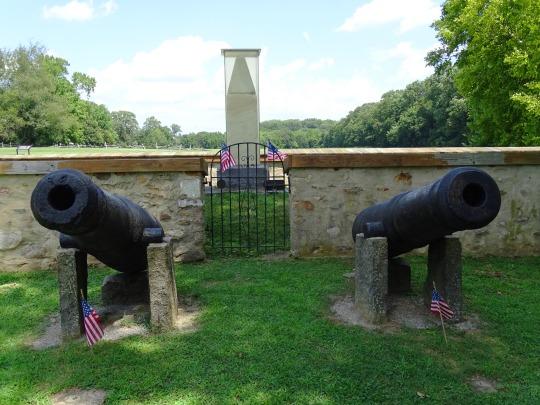
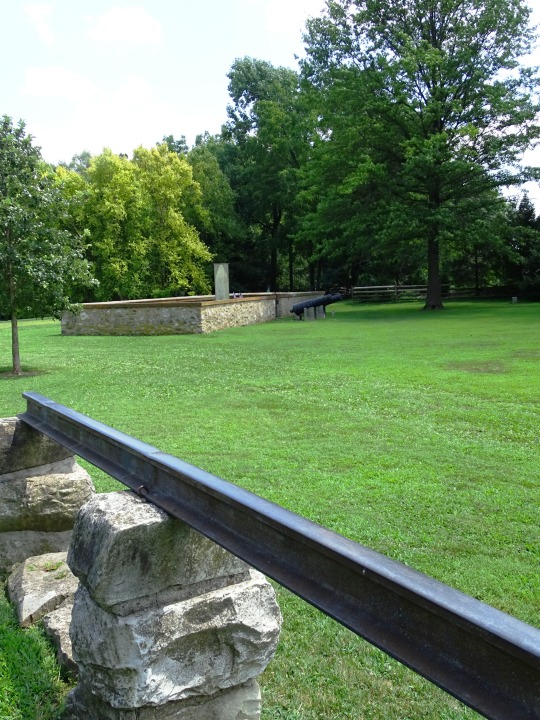
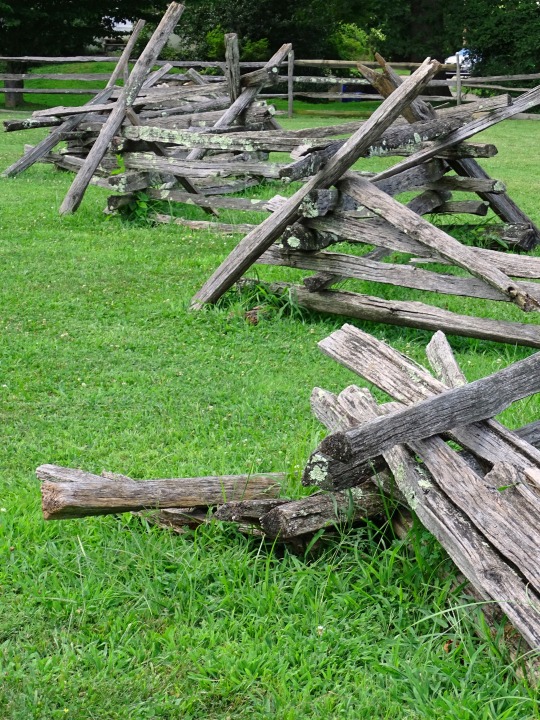
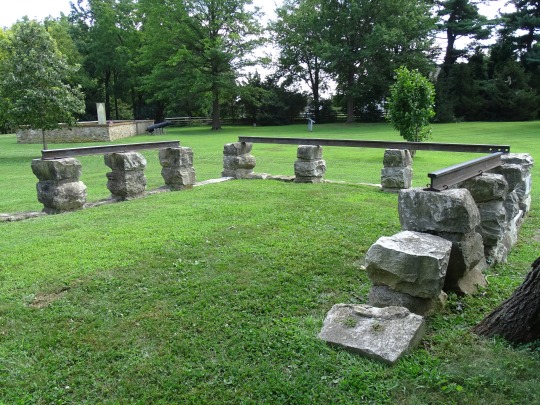

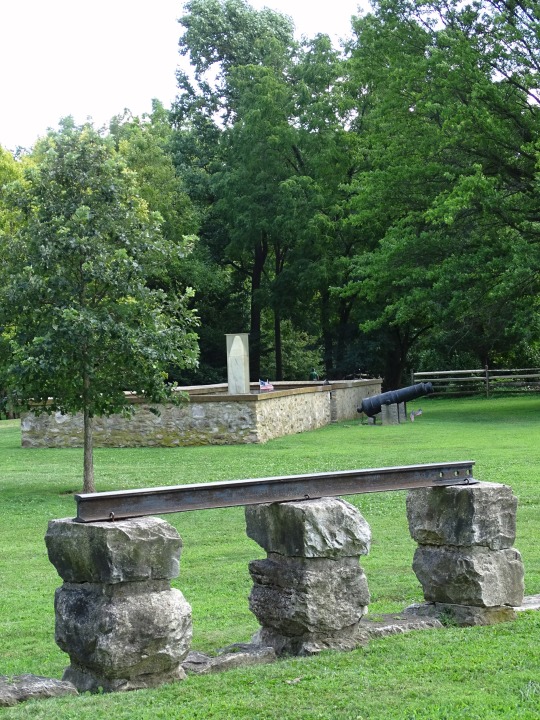

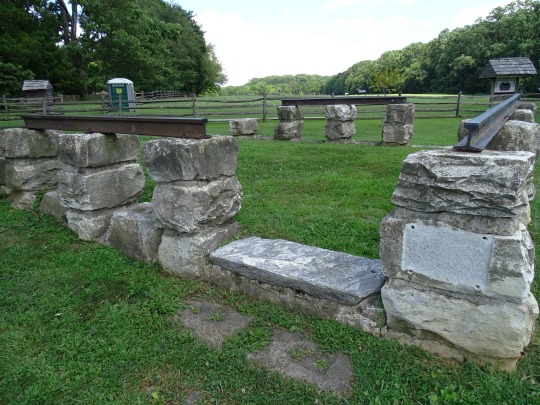

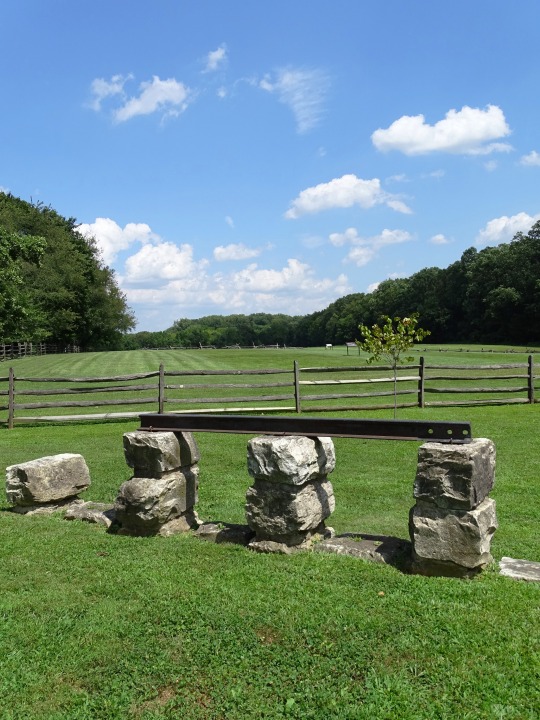
Paoli Battlefield Site and Parade Grounds, Malvern (No. 3)
At 10 p.m. on September 20, British commander Major General Charles Grey marched from the British camp and launched a surprise attack on Wayne's camp, near the General Paoli Tavern, from which the battle takes its name, located near present-day Malvern. Grey's troops consisted of the 2nd Light Infantry, a composite battalion formed from the light companies of 13 regiments, plus the 42nd and 44th Foot. Altogether, his brigade comprised some 1,200 men.
To ensure that the Americans were not alerted, General Grey ordered that troops should advance with muskets unloaded and attack with the bayonet alone. In the case that loads could not be drawn from weapons, he ordered that flints should be removed instead, giving rise to the tradition this was a general order and earning the General the epithet "No Flints" Grey. In fact, Major Maitland, commanding officer 2nd Light Infantry battalion, was given permission to advance with muskets loaded, giving his personal assurance that his men could be relied on.
The British forces, led by a local blacksmith forced to act as guide, approached the camp from a wood and were able to achieve complete surprise. They stormed the camp in three waves—the 2nd Light Infantry in the lead followed by the 44th and the 42nd. Completely unprepared, Wayne's troops fled from the camp and were pursued. Near the White Horse Tavern the British encountered Smallwood's force and routed it as well.
With casualties of only 4 killed and 7 wounded, the British had routed an entire American division. Historian Thomas J. McGuire says that 53 Americans were buried on the battlefield but "whether these were all of the American dead or only those found on the campsite-battlefield is uncertain". Local tradition says that 8 more Americans killed in the battle were buried at the nearby Anglican church of St. Peter-in-the-Great Valley. 71 prisoners were taken by the British, 40 of whom were so badly wounded that they had to be left behind in nearby houses. A total of 272 men were killed, wounded or missing from Wayne's division after the battle. McGuire reports that the day after the battle, 52 dead Americans were buried (and another who was found later), 39 of the buried are un-named. The highest ranking American officer killed was Major Mareen Lamar (sometimes misspelled Marien).
Source: Wikipedia
#Paoli Battlefield Site and Parade Grounds#Malvern#Pennsylvania#vacation#Battle of Paoli#Battle of Paoli Tavern#Paoli Massacre Monument#travel#USA#summer 2019#American War of Independence#Remember Paoli!#ruins#outhouse#lawn#small town#original photography#US history#American Revolutionary War#cannon#tree#forest#flora#nature
2 notes
·
View notes
Photo

75 years ago today – On May 3, 1945, the day after capturing a group of Nazi rocketeers, the U.S. 44th Infantry Division takes this photo of the German surrenderers. Pictured are (from center left, in the black hat) Dieter Huzel, Magnus von Braun, Walter Dornberger, Herbert Axster, Wernher von Braun (in the cast), Hans Lindenberg, and Bernhard Tessmann. All seven, plus several hundred other German specialists, came to the U.S. in the following months via Operation Paperclip despite their involvement with slave labor at Peenemünde and Dora-Mittelbau and other atrocities.
#imagine not only losing WWII but also looking like such an enormous dumbass while doing so. can't relate!#wernher von braun#operation paperclip#WWII#1940s#I need a tag for my thesis research
20 notes
·
View notes
Text
Between December 16, and December 19, 1944, my father was one of the many captured American prisoners during the famous "Battle of the Bulge." Wading through the two foot snow and below zero temperatures, they were crowded upon cattle cars and transported to Stalag 1X-B at Bad Orb, Germany.
As stated by another POW...December 17Th, Captured. - Walked all night
December 18Th walked all day- 1/3 Loaf bread cheese, marmalade
December 19Th in PW cage
December 20Th walked all day
December 21st walked all day
December 22nd walked all day
December 23rd Boarded train no food
December 24th on train no food no water
December 25th on train no food little waterDecember 26th 1/6 loaf, little meat 0100 on train
December 26th left train at 0900 Bad orb Stallager (IXB)
In April of 1945, the 44th Infantry Division pushed through German territory to liberate the POWs. This is what they had to say:
Stalag IX-B is usually regarded as the worst of the German camps that held American POWs.
2 notes
·
View notes
Photo

10 January, 1943 The Don Front began its offensive to destroy the German forces encircled at Stalingrad. 7 armies, 39 infantry divisions, 10 infantry and 4 tank brigades, 12 tank regiments, 89 artillery regiments, 24 mortar regiments and 5 Guards heavy mortar brigades, 250 tanks, 2,500 guns, 6,000 mortars, and 400 aircraft: these were the forces that began storming 6th Army's defenses in the frozen Don steppes. The artillery preparation began at 0800 hours. Thousands of guns and mortars fired for 55 minutes, bombers of 16th Air Army blasted away what was not yet reduced to smithereens. The infantry and tanks went into attack. 65th and 21st Armies delivered the main blow, breaking through the Marinovka salient. Army Group Don report to Hitler: "6th Army's command reports major breakthroughs by Russian forces in the north, west and south, aimed at Karpovka and Pitomnik. 44th and 76th Infantry Division suffered heavy losses, 29th Motorized Division has only a few units left. There is no hope to restore the situation. Dmitrievka, Tsybenko and Rakotino were lost." [Stalingrad Battle Data] https://www.instagram.com/p/BsdWqNtnAmy/?utm_source=ig_tumblr_share&igshid=n6ots520rxy5
36 notes
·
View notes
